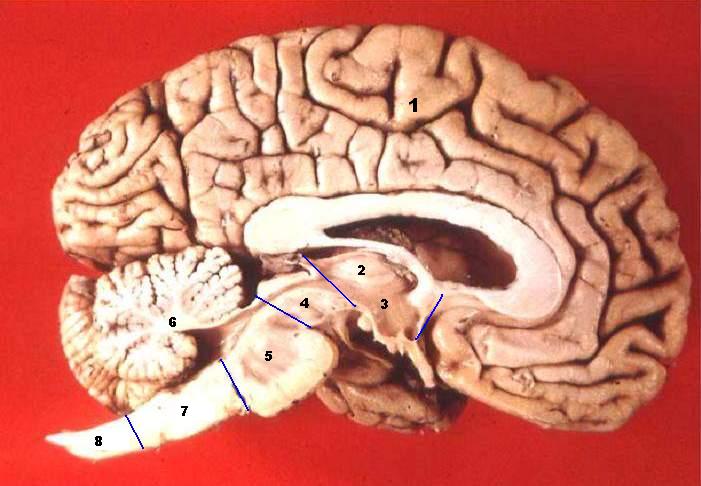
In the picture, the Pons is number 5.
The pons (sometimes pons Varolii after Costanzo Varolio) is a structure located on the brain stem. It is cranial to the medulla oblongata, caudal to the midbrain, and ventral to the cerebellum. In humans and other bipeds this means it is above the medulla, below the midbrain, and anterior to the cerebellum. (Hyperlinks lead to Wikipedia. For an article about the pons itself follow this link: en.wikipedia.org/wiki/Pons)
-----------------------------------------------------------------------------------------------------------------------------------------------------------------------------------------------------------------------------------------------------------------------
Function: The pons relays sensory information between the cerebellum and cerebrum; aids in relaying other messages in the brain; controls arousal, and regulates respiration.
To remember this memorise the following sentence:
The chess player’s respiration increased manifold, aroused by his opponents attack on his connected line of Pons.
You remember Pons through the double meaning of the word (brain area and chess piece). The mention of increasing respiration and arousal refers to two of the functions of this area. It's role in connecting brain areas and relaying information is encoded through the image of a connected line of pons (in the classical position in which the ones in the back cover/protect the ones in the front).
----------------------------------------------------------------------------------------------------------------------------------------------------------------------------------------------
If read p-ons(peons), they actually behave much like peons which are like labourers, someone that does work for cheap. Therefore your can remeber that they in fact do for the cerebellum and cerebrum by using the following: Picture a peon travelling back and forth from Mrs. Sarah Bellum (cerebellum) and Mrs. Sarah Brum (cerebrum) with messages.
[Jun]
Comments (0)
You don't have permission to comment on this page.